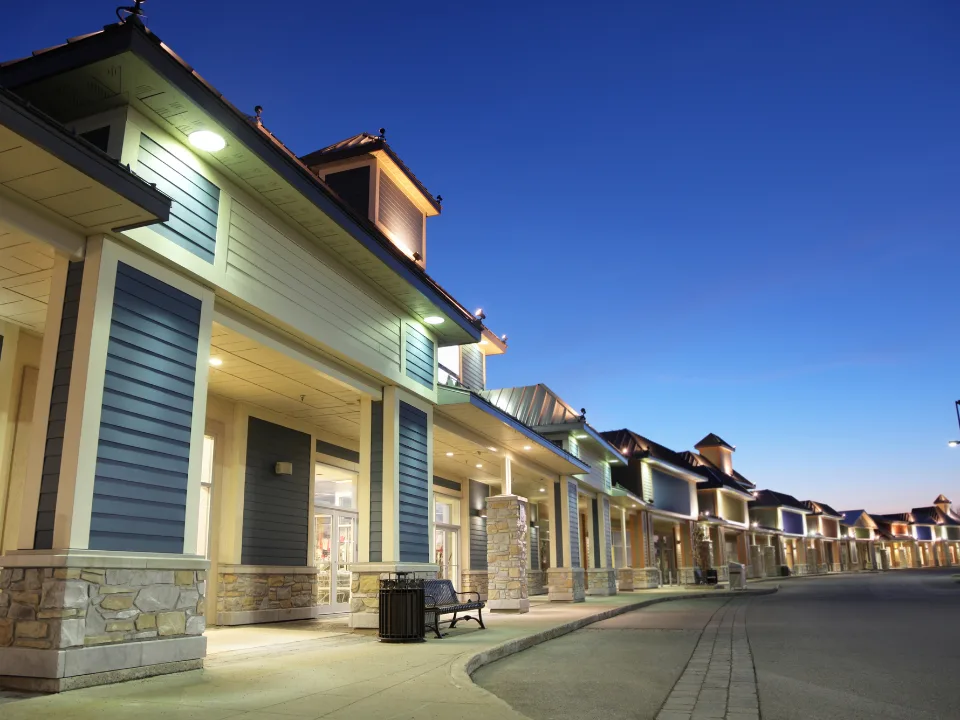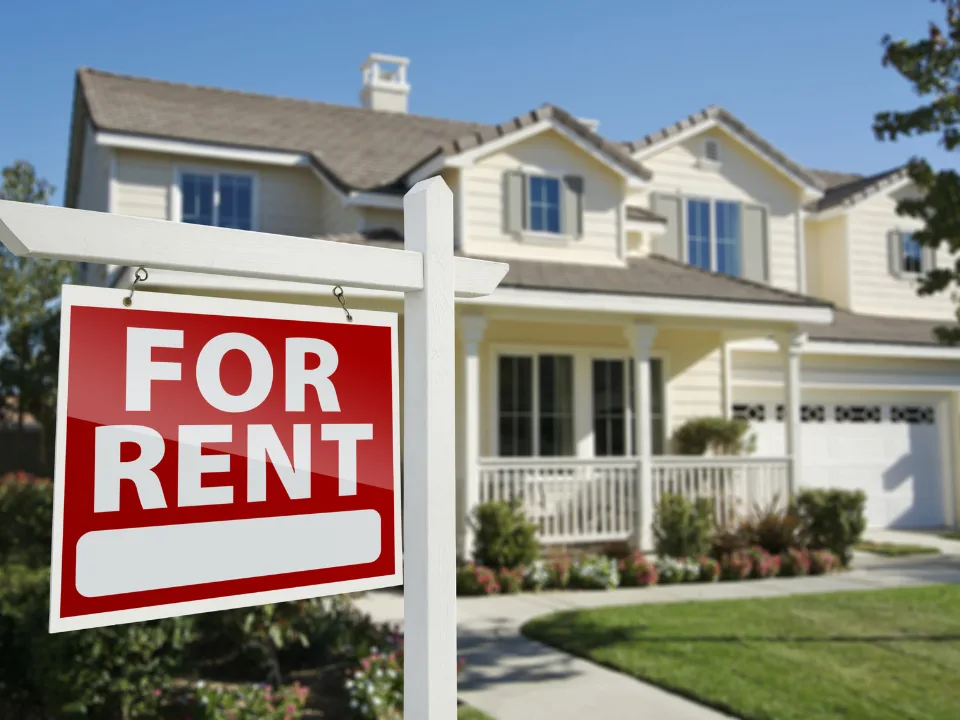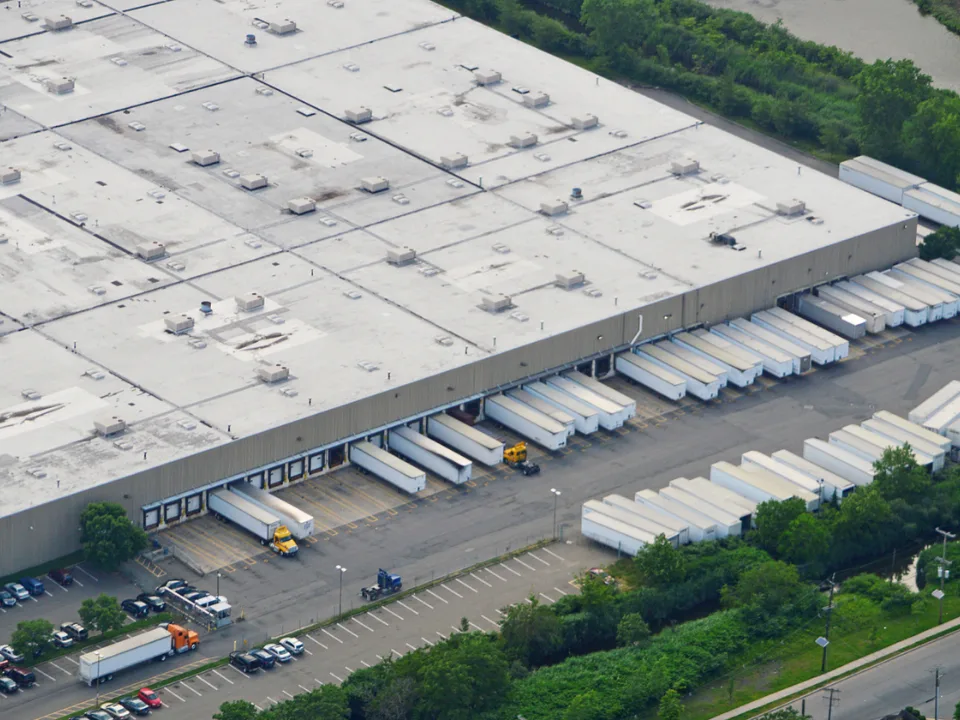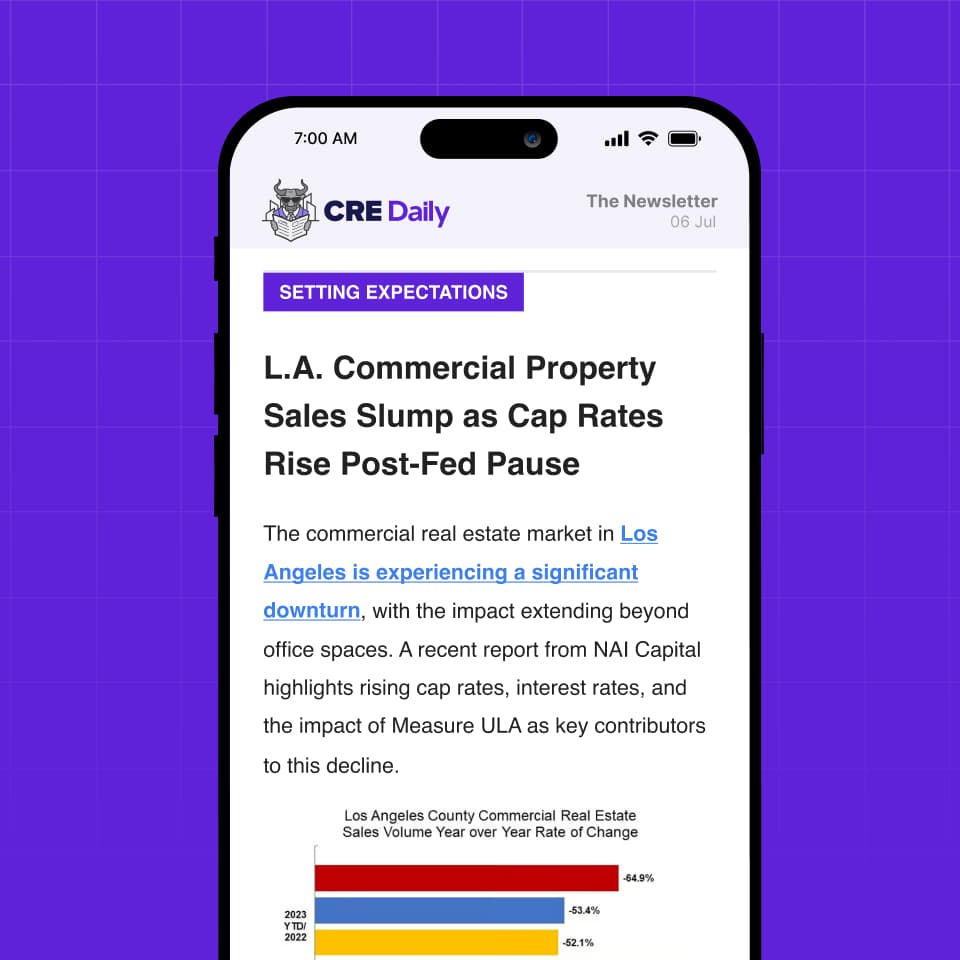- US CRE sales surged 30% YoY in February, reaching $24.4B.
- Retail led the charge with a 105% increase in sales volume, hitting $7.1B, driven partly by Blackstone’s $4B REIT acquisition.
- Office sales rose 55% to $3.5B, with CBD transactions up 217%, signaling renewed investor interest in core urban markets.
- Only retail and industrial posted positive pricing growth (+5% each); other sectors saw price declines, particularly hospitality (-9%) and office (-3%).
- February marked the ninth straight YoY monthly sales increase for multifamily, which totaled $7.5B in volume (+7%).
CRE Sees Broad-Based Recovery in February
CRE activity showed renewed strength in February, with total volume jumping 30% from a year prior, per GlobeSt. According to data from Colliers and MSCI, nearly every asset class saw increased sales activity as buyer interest picked up across markets and property types.
Retail and Office Drive the Momentum
Retail transactions more than doubled from February 2024, reaching $7.1B in total volume — the biggest increase across all property types. The jump was primarily powered by Blackstone’s $4B acquisition of Retail Opportunity Investments Corp., which took the REIT private. Blue Owl Capital also contributed with a $411.6M acquisition of a 165-property sale-leaseback portfolio from South State Bank.
Meanwhile, office sales posted a 55% YoY increase to $3.5B, bolstered by a 217% spike in CBD (central business district) transactions. A standout deal was Sutter Health’s $450M purchase of a 565 KSF portfolio from BioMed Realty, with other notable sales in Fort Lauderdale, Tampa, Denver, and SeaTac.
Get Smarter about what matters in CRE
Stay ahead of trends in commercial real estate with CRE Daily – the free newsletter delivering everything you need to start your day in just 5-minutes
Multifamily and Industrial Stay Resilient
Multifamily remained a consistent performer, with $7.5B in transactions — a 7% increase from last February. The sector also notched its ninth consecutive month of YoY sales growth. Key transactions included:
- Ares Management’s $270M purchase of a 392-unit Manhattan property from Mitsui Fudosan America.
- JBG Smith’s sale of a 322-unit building in Bethesda, MD to Peterson Cos. for $194M.
Industrial, while flat in terms of total sales volume ($5B), still saw some major transactions:
- Target bought a building under construction in Brighton, CO, for $231M.
- REI sold four assets to Madison Capital for $230M.
- Machine Investment Group acquired two properties from LSC Communications in Lancaster, PA, for $130M.
Hospitality Up, But Still Behind 2024 Levels
Hospitality sales grew 20% YoY, reaching $1.3B, although still below monthly averages from 2024. The most notable deals were:
- Columbia Pacific’s $114.4M purchase of a 153-room Manhattan hotel.
- Columbia Sussex Corp.’s $92M acquisition of the 406-room Westin in Washington, D.C.
Despite the uptick, hospitality prices dropped 9%, marking the sharpest decline across all sectors.
Prices Up for Some, Down for Others
While sales volume rose across the board (except flat growth in industrial), price changes were uneven:
- Retail and industrial: +5%
- Office: -3%
- Multifamily: -1%
- Hospitality (excluded from the official pricing index): -9%
Had hospitality been included in the pricing index, the overall 1% gain would have turned negative, highlighting the sector’s continued post-pandemic challenges.
Why It Matters
February’s surge suggests improving investor sentiment and a potential rebound in transaction activity across several asset classes — especially in retail and office, where volume and pricing have struggled in recent years. While pricing remains under pressure for some sectors, the strength in deal volume could indicate a turning point as buyers and sellers begin to narrow the bid-ask spread.
What’s Next
With sales volumes gaining ground and CBD office deals showing signs of life, the CRE market may be entering a new phase of selective recovery. However, pricing volatility and sector-specific challenges—particularly in hospitality and certain office segments—could continue to create headwinds through the first half of 2025.














